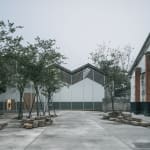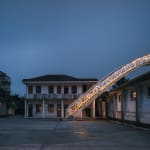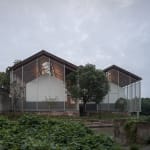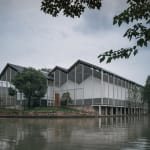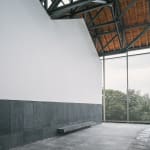






Exhibition Halls of Rice Barns in Wuzhen / Mainland China
Further images

Lieux de Mémoire: Dialogue with Memory
As the name suggests, Wuzhen Rice Barns, which are located in northern Zhejiang province, were originally a granary. As China's planned economy gave way to a market economy, the buildings survived in their various reincarnations, first as a factory, and now as an exhibition venue. The exhibition halls welcome curators, artists, and thousands of visitors into Wuzhen, and are suitable for hosting a wide array of cultural or commercial events. The functional and rectangular buildings from the old era were repurposed to become exhibition halls. Their characteristic triangular steel trusses, commonly found in industrial buildings erected in the 1960s, have been preserved to connect the space to not only its rich local history, but also more generally to the modern history of China. Moreover, comprehensive wiring racks, along with spotlights, were installed to modernize the structure while keeping the building's character intact. Besides conserving and updating the Barns' existing buildings, new structures, including a brand-new exhibition hall offering diffused skylights through frosted glass and a "hyperbola" bridge, were added to the complex. The futuristic metal bridge in the form of an arc, spanning across one of the buildings, symbolically connects the historic site to the future. It also resonates with other traditional Jiangnan-style bridges found in the area. As visitors contemplate the bow-shaped bridge, their vision is gestured towards the open sky, which suggests a vast infinity made accessible by human imagination and creation.


